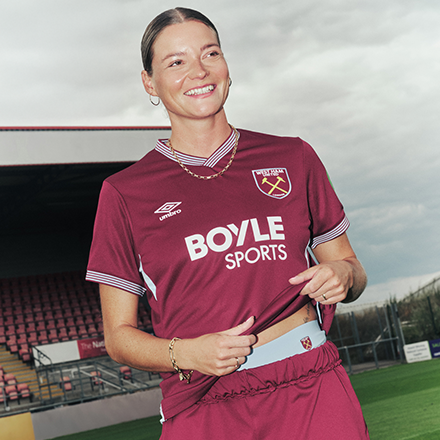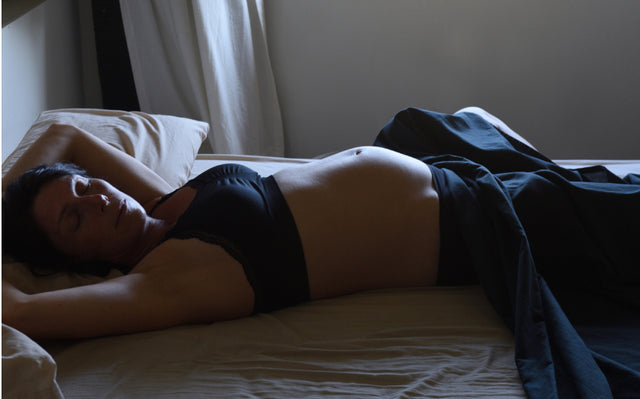There’s a lot to learn when you have a baby (we know, understatement of the century). From the moment you bring bub home, you’re expected to figure out how to take care of this tiny human – from sleeping to eating to teething and so much more.
For many new parents, breastfeeding is one of these things to learn. And while there’s no instruction manual, there are experts who’ve done it all before and are happy to share their wisdom. Enter, Dr Jana Pittman.
Not only is Dr Jana a women’s health expert, but she’s a mum of six – and she knows a thing or two about breastfeeding. In this article, we asked Dr Jana for her top tips to help new mums navigate the world of breastfeeding.
Will I have enough breastmilk for my baby?
Dr Jana: “Breastfeeding is one of my most cherished memories, but also definitely one of my greatest challenges. I tried to breastfeed all 6 of my children, with varying degrees of success. Milk supply for me was always an issue. My firstborn was only breastfed for 6 weeks, my middle girl was 3 years and my twins 10 months. Every journey was vastly different. So, my first message is to be kind to yourself, you are doing the best job that you can.
The incidence of mammary (breast) hypoplasia (not enough breast tissue) is debated, but experts predict around 5% of women may have true lactational insufficiency (aka low supply). Other women who have had breast surgery or have certain medical conditions, like hypothyroidism or Sheehan’s syndrome, can have great difficulty with supply. (1)
However, for most women, we can increase the volume of breast milk we produce to either fully or partially feed our babies. The question is: at what cost? The first thing to assess is are you truly not producing enough? Are there lots of wet nappies despite the chaotic crying that makes you think they’re starving? Look for signs of output, because they can’t wee or poop without feeding.
I truly did have low supply, evidenced by rust-coloured urine and dropping in weight centiles. After my son, where we made it to 6 weeks, I was very committed for the next baby to try and make 6 months. I got in contact with an amazing lactation consultant who guided me through ideas and provided much-needed reassurance.
For months on end, I fed, then pumped, then gave the expressed milk in a bottle to top up, and then had a 30-minute break before the rigmarole started again. I drank litres of lactation tea and feasted on milk-boosting biscuits. You name it, I tried it. Was it worth it? For me, yes. But in hindsight, it took such a toll on my other kids, my mental health, and my relationships that I strongly think women need to do what is right for them. A happy mummy makes a happy baby (and a more settled one).”
Is it normal to only have a small amount of colostrum when breastfeeding?
Dr Jana: “Colostrum is the first milk produced by your breasts after birth. It is ‘liquid gold’, high in protein, low in fat and full of antibodies, perfect for your baby. If you only decide to give your little one a few days on the breast to give them this boost in life, you have already done very well.
Some women even start antenatal expressing and store their colostrum in the freezer for after birth, but most experts recommend waiting till after 36 weeks for this. Expressing for 15 to 20 minutes and alternating between breasts can help increase the amount you make, but it might only be a drop or up to about 10mls in the 24 hours after birth. This is normal. In fact, your baby only needs 2-10mls of colostrum when they are just born.”
Is breastfeeding painful?
Dr Jana: “It can be, particularly if your little one has a poor latch. That is why it's fabulous to get someone with experience, like your midwife or a lactation consultant, to help you with positioning your baby and getting a good ‘latch’.
Cracked nipples and pain are a sign of it not being quite right. Nipple pain can also be caused by things like thrush (yeast infection) and breast pain by things like mastitis. If you think you might be feeling these symptoms, it is important to try and feed evenly on both sides and seek help if you need.”
If I use a breast pump, how long can I store my breast milk?
Dr Jana: “Breast pumps are great to help boost your supply and store milk for a rainy day. To increase supply, many lactation specialists recommend adding a ‘pump’ straight after breastfeeding, because it tells your breasts to ‘make more please’.
You can store fresh milk:
- For 6 hours at room temperature
- For 3 to 4 days in your fridge (depending on the temperature of the fridge try to keep it below 6°C).
- For 4 to 6 months in a regular kitchen freezer (keep below -18°C)
- For 12 months in a deep freezer
How long should I breastfeed for?
Dr Jana: “How long you should breastfeed is a very personal decision and many factors come into play. Do you enjoy it? Do you have other little kids who need attention? Do you have to go back to work?
In an ideal world, the World Health Organisation (WHO) recommends exclusively breastfeeding (i.e., no other fluids or solids) for at least six months and then, if possible, to continue breastmilk with other foods introduced until 2 years, or to stop when mum or bub desires after that.
For me, weaning was a very teary process regardless of how long it went for, but there are also other ways to snuggle your bub and get that lovely bonding. Once we stopped, ‘bottle time’ became ‘snuggle time’, just like with the breast, however now they look at my face, rather than obsessed with my nipples.”
What are your tips for first-time mums who are breastfeeding?
Dr Jana: “My tops tips are to relax, take it one day at a time, drink lots of water, and get help – see a lactation specialist if you are struggling. Get as much rest as you can and try to sleep when they do.
It also helps to get a good breastfeeding bra, Modibodi’s leak-proof Breastfeeding Bra is ideal. It’s wire-free, super comfy and has interchangeable sizing as your body adapts throughout the postpartum phase. Plus, if you are anything like me, I was always forgetting my breast pads and shoving tissues in my bra! The built-in leak-proof technology means when someone’s baby cries, you don’t need to worry.”
With Dr Jana’s tips and advice, we hope you’re feeling a bit more prepared for your breastfeeding journey. Check out our Maternity Range today and see how life-changing our leak-proof apparel really is.
**For more great information on breastfeeding check out the Australian Breast feeding association website: https://www.breastfeeding.asn.au/resources/expressing-newborn
References
- Arbour MW, Kessler JL. Mammary hypoplasia: not every breast can produce sufficient milk. J Midwifery Womens Health. 2013 Jul-Aug;58(4):457-61. doi: 10.1111/jmwh.12070. Epub 2013 Jul 19. PMID: 23870298.
- Australian Breast Feeding Association. https://www.breastfeeding.asn.au/resources/expressing-newborn






